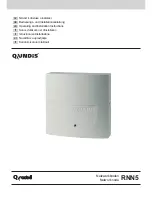
291
In BGP IPv6 unicast instance view:
peer
{
group-name
|
ipv6-address
}
next-hop-local
undo peer
{
group-name
|
ipv6-address
}
next-hop-local
Default
The router sets itself as the next hop for routes sent to an EBGP peer or peer group, but does not set itself
as the next hop for routes sent to an IBGP peer or peer group.
Views
BGP IPv4 unicast instance view, BGP-VPN IPv4 unicast instance view, BGP IPv6 unicast instance view
Predefined user roles
network-admin
Parameters
group-name
: Specifies a peer group by its name, a case-sensitive string of 1 to 47 characters. The peer
group must have been created.
ip-address
: Specifies a peer by its IP address. The peer must have been created.
ipv6-address
: Specifies a peer by its IPv6 address. The peer must have been created.
Usage guidelines
To make sure that an IBGP peer can find the next hop, you can use this command to specify the router
as the next hop for routes sent to the IBGP peer.
Examples
# In BGP IPv4 unicast instance view, specify the router as the next hop for routes sent to peer group
test
.
<Sysname> system-view
[Sysname] bgp 100
[Sysname-bgp] ipv4-family unicast
[Sysname-bgp-ipv4] peer test next-hop-local
# In BGP-VPN IPv4 unicast instance view, specify the router as the next hop for routes sent to peer group
test
.
<Sysname> system-view
[Sysname] bgp 100
[Sysname-bgp] ip vpn-instance vpn1
[Sysname-bgp-vpn1] ipv4-family unicast
[Sysname-bgp-ipv4-vpn1] peer test next-hop-local
# In BGP IPv6 unicast instance view, specify the router as the next hop for routes sent to peer group
test
.
<Sysname> system-view
[Sysname] bgp 100
[Sysname-bgp] ipv6-family unicast
[Sysname-bgp-ipv6] peer test next-hop-local
peer password
Use
peer password
to configure MD5 authentication for a peer or peer group.
Use
undo peer password
to remove the MD5 configuration for a peer or peer group.
















































